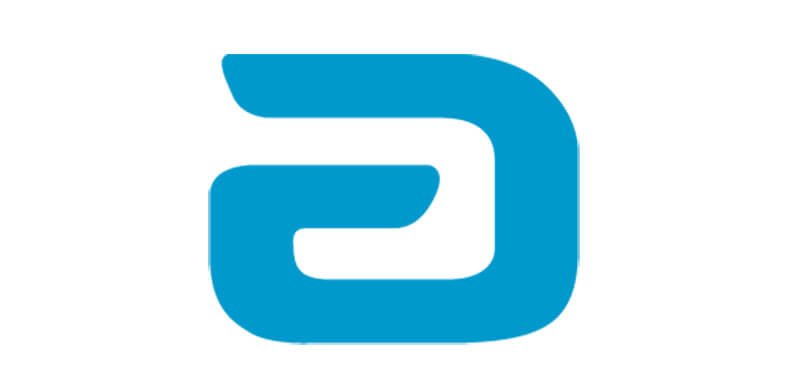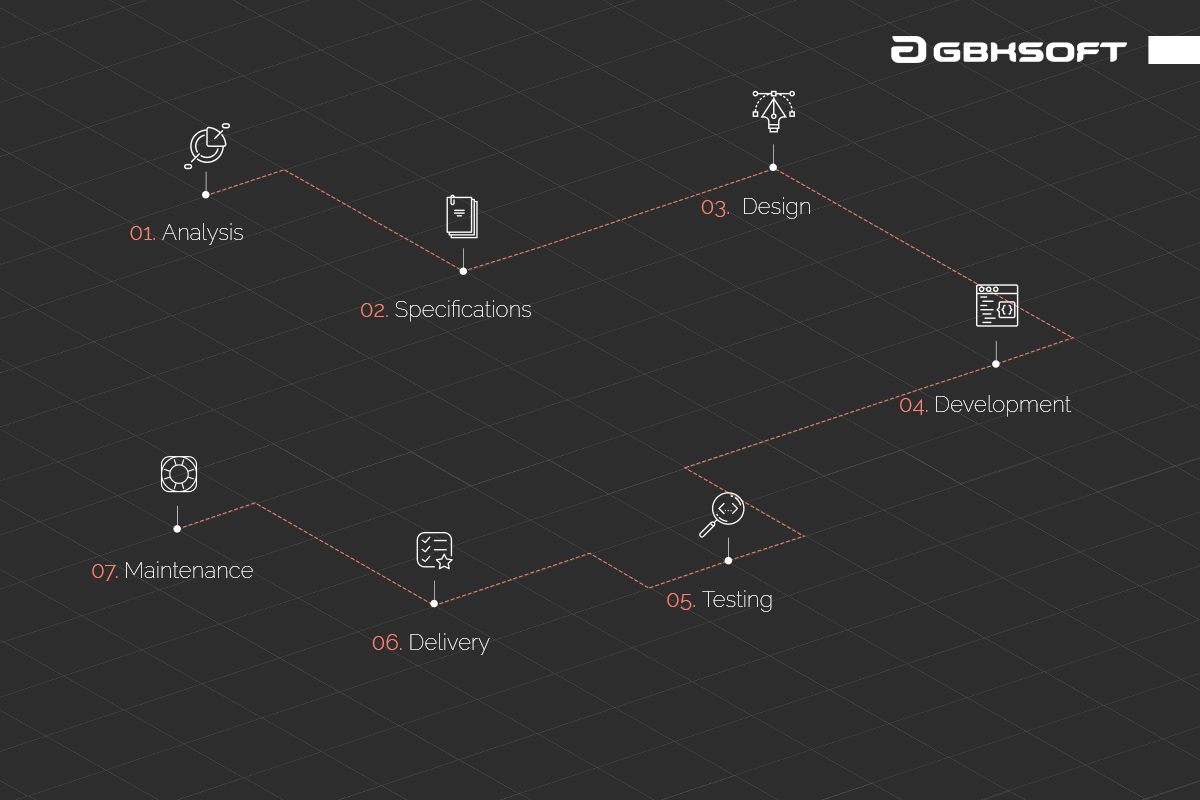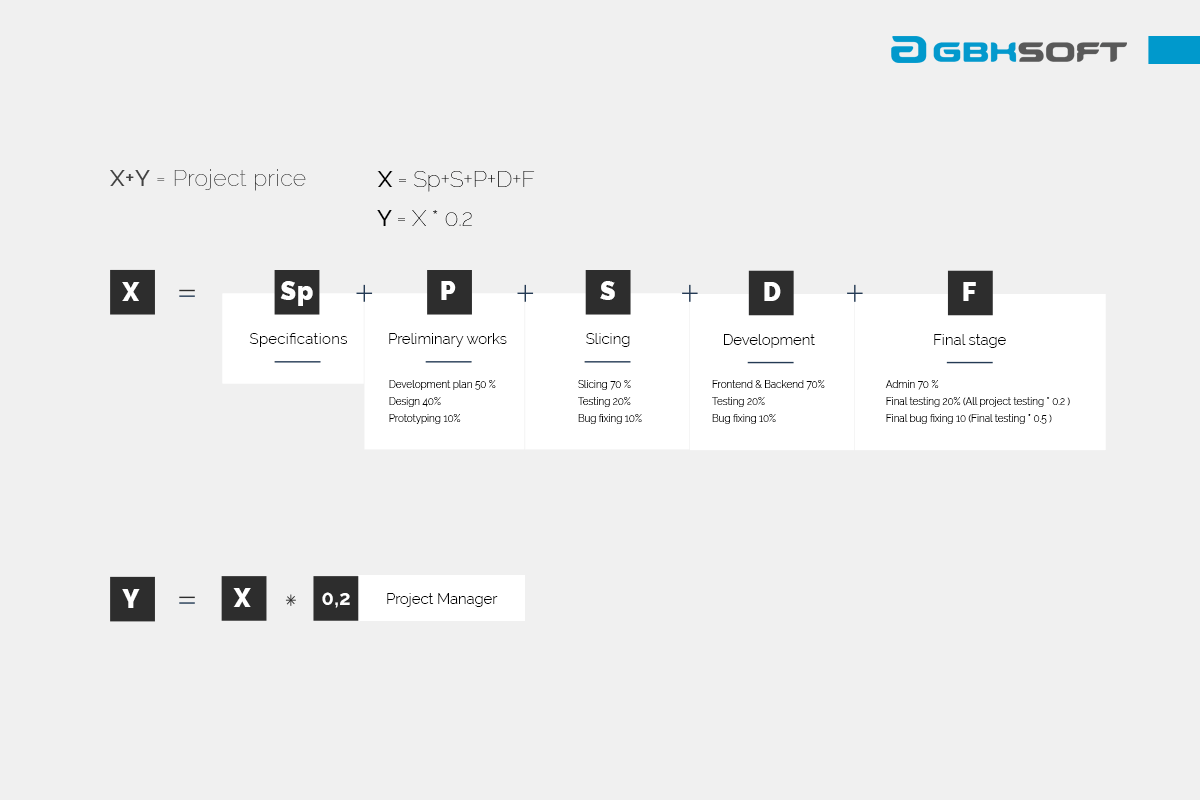
If you’re looking for web development services you may be stranded with the price range and vague answers of sales managers. This is mainly because of the nature of service itself. There are too many risks and unforeseeable issues that are hidden in the development of custom products. And none of us want to take those risks.
Therefore, unless you’re looking for a package/template solution, all developers will ask you hundreds of questions before giving you the exact price tag. Or you’ll be given a rough estimation with a spread of several thousands of dollars.
Nevertheless, it’s not all doom and gloom. While the price in each case is highly dependable on your preferences and company rates, there is a framework that allows you to quickly evaluate the approximate cost of the project. Do not confuse web and mobile app development. Mobile has its own specifics and price formation rules.

There are two values that influence development costs directly:
- Time for development – Can be lowered by compromising on quality, or cutting off some of the project’s functionality.
- Hour rates – Can be slightly lowered by choosing ‘cheaper’ programming languages. Some programmers are valued less on the market than the others. But generally the choice of technologies are determined by the goals of your project and you won’t gain a big gap in terms of price by choosing ‘cheaper’ technologies.
For instance, PHP developer is cheaper than one that knows Node.js. But real-time exchange features (like technology Uber uses visualizing cars movement) can’t be implemented with plain PHP, unless you want to constantly reload your page.
From this point, you’ll need to know what kinds of specialists are needed for web development and how much time they will spend to complete your project.
Now, let’s look at development stages and list specialists with the percentage of time they put on this stage.
Depending on the company there might be different development stages and namings for them. At GBKSOFT, we count only those that are measurable and directly affect the final cost, no matter the specifics of the project.
Development Stages

Analysis
Before starting the specification stage, web development companies can also put such stops as: “Discovery”, “Research”, “Analysis”, etc. Those are the stages made by sales managers and marketers in order to approach you, make advice and evaluate your requirements.
These expenses are highly dependable on the internal company organization and can’t be included into the costs of the development. Consider “Discovery” as a welcome gift, which includes various tech consultations and free advice with a certain level of generosity.
Specifications
This is where you should give the most of your effort in order to transfer your vision to the team. A Clear description of the project, detailed specifications, good planning from start to finish guarantee development of the product on time and within a set budget.
Specifications are the first actual paid stage. On this stop, you’ll be working closely with the team. In most cases, the dialog will be held through project manager, or he will facilitate the process, to transfer your requirements to the architect.
- Architect (Senior Developer) 50%
- Sales / Project Manager 50%
This step is especially important if you’re working with fixed price model. If the specs are not well written, all unexpected problems and jams during the development process will affect the speed and quality of the final product.
By the way, Specifications is the best stage to jump off in case you are experiencing bumpy road and not satisfied with the team. Take it as a test drive, in worst case scenario, you’ll still have a valuable experience and specs, that will greatly decrease the amount of time you’ll spend on negotiations with another team.
Preliminary works
Mockups, wireframes, logo designs, prototypes. Works and prototyping are made during this stage. This stage is heavily dependent on the Designer and Project Manager, that will coordinate the process.
- Development Plan (Project Manager) 50%
- Design 40%
- Prototyping (Design) 10%
Slicing
The actual coding starts here. This is when your prototype will be transferred to the computer screen. No database and payments processing systems, though. Just a visualization.
- Slicing (HTML/CSS Developer) 70%
- Testing 20%
- Bug fixing 10%
Development
Depending on the project complexity and a number of required features, this stage may have several milestones (sprints). Each of them includes Development, Testing, and Bug Fixing iterations.
- Frontend & Backend Developers 70%
- Testing 20%
- Bug fixing 10%
Final stage
Also known as “Delivery”. Upon this stage, the admin will prepare live environment and server infrastructure from where the project will be running.
- Admin 70%
- Final testing 20% (All project testing * 0.2)
- Final bug fixing 10% (Final testing * 0.5 )
Project Management
Apart from the coding, you should add 10 to 30% of the time for Project Manager work. In most cases, customers are freaking out about the amount of time that is dedicated to the PM. He is not an obvious player, but certainly the most important one.
Project Manager allows you to effectively communicate with the development team. He ensures that the final product meets your expectations. PM is responsible for organization the development process. They make sure that specialists understand your requirements and monitor the workflow, so that the project is ready on time and with the full set of features you have asked for.
Another part of PM’s job is to facilitate the communication between developers. The communication is handled through various task managers and you will certainly have an access to them. But it shouldn’t be your concern if someone has caught a cold or stuck in the middle of bug fixing.
Project Manager responsibilities:
1. Team management and coordination with interested parties at every stage of the project development.
2. Planning, implementation, and control of the development process according to project specifications.
3. Constant communication with the client and team.
4. Acceptance testing and adjustment of the project to client expectation.
5. Optimization of project development in accordance with client input.
6. Quality assurance on each step of the development process.
7. Problem-solving and adherence to customer’s objectives.
8. Implementation of the development methodology that fits project requirements.
Consider your Project Manager as a field officer on the front-line, or as your representative. PM is constantly in touch with you in order to provide all necessary information in the course of development. That is PM’s first responsibility to ensure that the end result meets your expectations.
Calculations

Now, all you need to do is request hour rates for specialists needed and make a rough estimation to understand the amount of time each of the development stages will require. After that, you may just wander around the market requesting hour rates and making simple math as it shown on the image above.